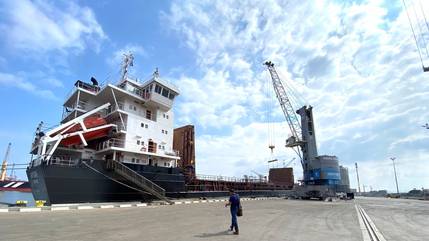Fleet Growth to Outstrip Demand: BIMCO
Fleet growth expected to outstrip demand growth in 2019 and 2020, making the near future look unappealing, says BIMCO.
In the first four months of 2019, yards delivered 10m DWT of newbuilt dry bulk shipping capacity. The demolition of 3.9m DWT limited the immediate negative impact, but even a fleet growth of 0.7% harms the market, as cargo demand is seasonally low.
Capesize accounted for 87% of the demolished capacity pushed out of the market, as freight rates fell and the outlook turned bleaker.
Because of this unexpectedly dramatic start to the year, BIMCO revised its demolition forecast for 2019 up to 8m DWT from 4m DWT. It’s worth noting that Panamax, Supramax and Handysize ships also operated at lossmaking freight rates levels for the first four months of 2019 without causing a rush to demolish. Therefore, the forecast is kept at 8m DWT.
BIMCO’s estimated fleet growth remains around 3% for 2019 and 2020, under the given assumptions.
On 1 May, the orderbook stands at 96m DWT [source: Clarksons]. It’s been unchanged at that level since February 2018, with around 100m DWT scheduled for future delivery. This is bad news.
To accommodate this fleet growth and retain a balanced market, the demand growth would need to reach 5% per year. "We did have that level of demand growth in 2003-2007 and 2010-2014, but given the current developments in China, it is very unlikely to return anytime soon," BIMCO said.
Chinese steel demand is following a downwards-pointing trajectory, according to the World Steel Association (worldsteel). The reason is the combined effect of overall slowdown in China’s economic activity growth, and trade tensions with key trading partners.
Worldsteel expects government stimulus in 2019 will give a boost to steel demand, before another slowdown in 2020. The knock-on effect of that stimulus is already being seen, with Chinese steel production growing by 9.9% in Q1-2019 compared with the same period in 2018.
The EIA estimates that total coal exports from the US reached 104.9m metric tonnes in 2018, up by 16.9m metric tonnes from 2017 (data has been converted to metric tonnes from US short tons).
Of this, 53% was coking coal for use in the steel production industry and 47% was thermal coal, used for generating electricity.
Thermal coal exports in 2018 were up to all regions, including Europe. The largest gains were seen in Asia, which benefitted the dry bulk industry the most because of the long sailing distance. India remained the No 1 importer. The country grew its imports by 53% to reach 10.5m tonnes in 2018. No 2 destination was the European gateway, the Netherlands, which grew by just 3.2% to reach 5.6m tonnes.
Although Chinese imports only account for 0.7% of total thermal coal exports from the US, the 99.4% decline in Q4-2018 year-on-year was a clear sign of the ongoing trade war.
Europe takes the lion share of US coking coal exports, at 44%. Europe was also the region growing the most in volume terms, and is up by 10.9%.
What could stop the EIA’s expected decline in US coal exports? Continued high world market prices.
US coal exports are mostly affected by international coal prices. When exporters are stretched and prices go up, the US is the go-to country for global importers.
In conclusion, BIMCO sees fleet growth outstripping demand growth in 2019 and 2020, making the near future look unappealing.












